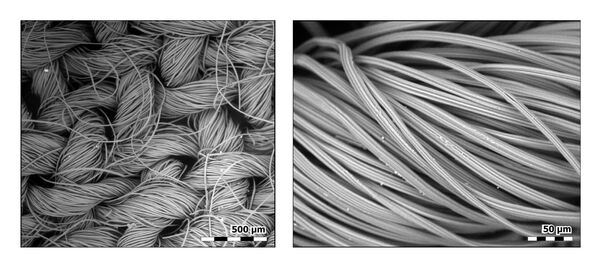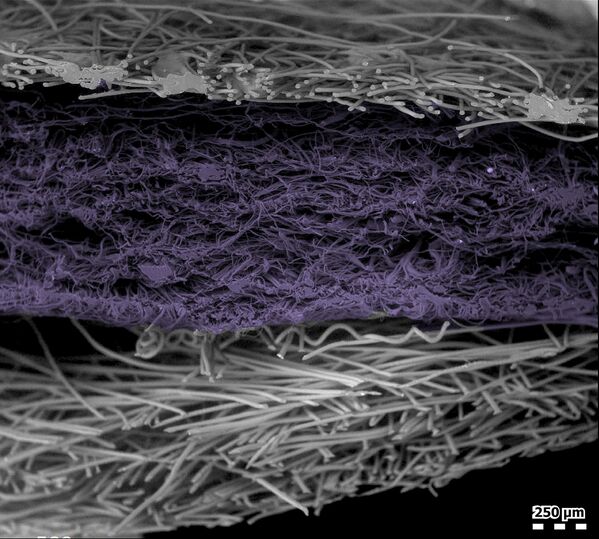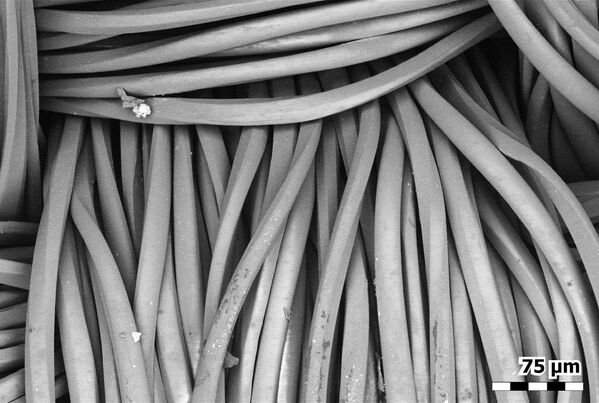Experts agree that the more filters a mask has the more effective it is. They say a surgical mask is the best solution to protect oneself against viruses.
If you look at a mask through an electronic microscope you will be able to see fibres of the material it is made of.
Check out Sputnik's gallery to find out which types of mask will give you the best protection against the coronavirus.

A cross-section of a cotton flannel face mask and its over/under weave photographed using a scanning electron microscope.

Fibres of a face mask made of rayon photographed using a scanning electron microscope.

A false-colour image showing a cross-section of one layer of an N95 respirator mask.

Individual fibres in a cotton flannel face mask photographed using a scanning electron microscope.

The fibres of a polyester mask seen through a microscope.

Fibres of a polyester face mask seen through a microscope.

Top-down views of cotton flannel (L) and polyester face masks, photographed using a scanning electron microscope.

Polyester fibres in a face mask.



